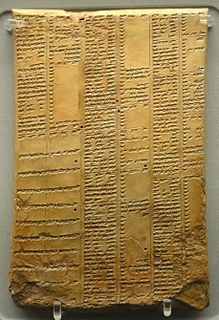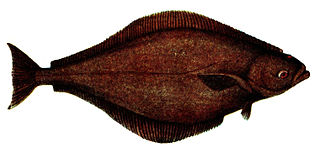| Microstomini | |
|---|---|
 | |
| Scientific classification | |
| Kingdom: | |
| Phylum: | |
| Class: | |
| Order: | |
| Family: | |
| Subfamily: | |
| Tribe: | Microstomini |
Microstomini is a tribe of fish in the Pleuronectinae subfamily.
| Microstomini | |
|---|---|
 | |
| Scientific classification | |
| Kingdom: | |
| Phylum: | |
| Class: | |
| Order: | |
| Family: | |
| Subfamily: | |
| Tribe: | Microstomini |
Microstomini is a tribe of fish in the Pleuronectinae subfamily.
The word Microstomini is derived from the Greek μικρὸς (mikros), meaning "small", and στόμα (stoma), meaning "mouth".

Communication is "an apparent answer to the painful divisions between self and other, private and public, and inner thought and outer world." As this definition indicates, communication is difficult to define in a consistent manner, because in common use it refers to a very wide range of different behaviours involved in the propagation of information. John Peters argues the difficulty of defining communication emerges from the fact that communication is both a universal phenomenon and a specific discipline of institutional academic study.

An encyclopedia, encyclopædia, or encyclopaedia is a reference work or compendium providing summaries of knowledge either general or special to a particular field or discipline. Encyclopedias are divided into articles or entries that are arranged alphabetically by article name or by thematic categories, or else are hyperlinked and searchable by random access. Encyclopedia entries are longer and more detailed than those in most dictionaries. Generally speaking, encyclopedia articles focus on factual information concerning the subject named in the article's title; this is unlike dictionary entries, which focus on linguistic information about words, such as their etymology, meaning, pronunciation, use, and grammatical forms.

A language is a structured system of communication. The structure of a language is its grammar and the free components are its vocabulary. Languages are the primary means of communication of humans, and can be conveyed through speech, sign, or writing. Many languages, including the most widely-spoken ones, have writing systems that enable sounds or signs to be recorded for later reactivation. Human language is unique among the known systems of animal communication in that it is not dependent on a single mode of transmission, is highly variable between cultures and across time, and affords a much wider range of expression than other systems.

The meaning of life, or the answer to the question: "What is the meaning of life?", pertains to the significance of living or existence in general. Many other related questions include: "Why are we here?", "What is life all about?", or "What is the purpose of existence?" There have been many proposed answers to these questions from many different cultural and ideological backgrounds. The search for life's meaning has produced much philosophical, scientific, theological, and metaphysical speculation throughout history. Different people and cultures believe different things for the answer to this question.
Semantics is the study of reference, meaning, or truth. The term can be used to refer to subfields of several distinct disciplines, including philosophy, linguistics and computer science.

The Quran, also romanized Qur'an or Koran, is the central religious text of Islam, believed by Muslims to be a revelation from God. It is organized in 114 chapters, which consist of verses. In addition to its religious significance, it is widely regarded as the finest work in Arabic literature, and has significantly influenced the Arabic language.

Kanji are the logographic Chinese characters taken from the Chinese script and used in the writing of Japanese. They were made a major part of the Japanese writing system during the time of Old Japanese and are still used, along with the subsequently-derived syllabic scripts of hiragana and katakana. The characters have Japanese pronunciations; most have two, with one based on the Chinese sound. A few characters were invented in Japan by constructing character components derived from other Chinese characters. After World War II, Japan made its own efforts to simplify the characters, now known as shinjitai, by a process similar to China's simplification efforts, with the intention to increase literacy among the common folk. Since the 1920s, the Japanese government has published character lists periodically to help direct the education of its citizenry through the myriad Chinese characters that exist. There are nearly 3,000 kanji used in Japanese names and in common communication.

A symbol is a mark, sign, or word that indicates, signifies, or is understood as representing an idea, object, or relationship. Symbols allow people to go beyond what is known or seen by creating linkages between otherwise very different concepts and experiences. All communication is achieved through the use of symbols. Symbols take the form of words, sounds, gestures, ideas, or visual images and are used to convey other ideas and beliefs. For example, a red octagon is a common symbol for "STOP"; on maps, blue lines often represent rivers; and a red rose often symbolizes love and compassion. Numerals are symbols for numbers; letters of an alphabet may be symbols for certain phonemes; and personal names are symbols representing individuals. The variable 'x', in a mathematical equation, may symbolize the position of a particle in space.
An idiom is a phrase or expression that typically presents a figurative, non-literal meaning attached to the phrase; but some phrases become figurative idioms while retaining the literal meaning of the phrase. Categorized as formulaic language, an idiom's figurative meaning is different from the literal meaning. Idioms occur frequently in all languages; in English alone there are an estimated twenty-five million idiomatic expressions.

Egyptian hieroglyphs were the formal writing system used in Ancient Egypt, used for writing the Egyptian language. Hieroglyphs combined logographic, syllabic and alphabetic elements, with some 1,000 distinct characters. Cursive hieroglyphs were used for religious literature on papyrus and wood. The later hieratic and demotic Egyptian scripts were derived from hieroglyphic writing, as was the Proto-Sinaitic script that later evolved into the Phoenician alphabet. Through the Phoenician alphabet's major child systems, the Egyptian hieroglyphic script is ancestral to the majority of scripts in modern use, most prominently the Latin and Cyrillic scripts and the Arabic script and possibly Brahmic family of scripts.

A synonym is a word, or phrase that means exactly or nearly the same as another word, morpheme, or phrase in a given language. For example, in the English language, the words begin, start, commence, and initiate are all synonyms of one another: they are synonymous. The standard test for synonymy is substitution: one form can be replaced by another in a sentence without changing its meaning. Words are considered synonymous in only one particular sense: for example, long and extended in the context long time or extended time are synonymous, but long cannot be used in the phrase extended family. Synonyms with exactly the same meaning share a seme or denotational sememe, whereas those with inexactly similar meanings share a broader denotational or connotational sememe and thus overlap within a semantic field. The former are sometimes called cognitive synonyms and the latter, near-synonyms, plesionyms or poecilonyms.

Hanja, alternatively known as Hancha, is the Korean name for a traditional writing system which consists of Chinese characters that has been incorporated and used as early as the Gojoseon period, the first ever Korean kingdom. More specifically, it refers to the Chinese characters incorporated into the Korean language with Korean pronunciation.

Absurdism is the philosophical theory that life in general is absurd. This implies that the world lacks meaning or a higher purpose and is not fully intelligible by reason. The term "absurd" also has a more specific sense in the context of absurdism: it refers to a conflict or a discrepancy between two things but there are several disagreements about their exact nature. These disagreements have various consequences for whether absurdism is true and for the arguments cited in favor and against it. Popular accounts characterize the conflict as a collision between rational man and an irrational universe, between intention and outcome, or between subjective assessment and objective worth. An important aspect of absurdism is its claim that the world as a whole is absurd. It differs in this regard from the uncontroversial and less global thesis that some particular situations, persons, or phases in life are absurd.

A given name is the part of a personal name that identifies a person, potentially with a middle name as well, and differentiates that person from the other members of a group who have a common surname. The term given name refers to a name usually bestowed at or close to the time of birth, usually by the parents of the newborn. A Christian name is the first name which is given at baptism, in Christian custom.

In the context of United States law, originalism is a concept regarding the interpretation of the Constitution that asserts that all statements in the constitution must be interpreted based on the original understanding "at the time it was adopted". This concept views the Constitution as stable from the time of enactment and that the meaning of its contents can be changed only by the steps set out in Article Five. This notion stands in contrast to the concept of the Living Constitution, which asserts that the Constitution should be interpreted based on the context of current times and political identities, even if such interpretation is different from the original interpretations of the document. Originalism should not be confused with strict constructionism.
A birth name is the name of a person given upon birth. The term may be applied to the surname, the given name, or the entire name. Where births are required to be officially registered, the entire name entered onto a birth certificate or birth register may by that fact alone become the person's legal name.

Horon directly derives from the greek word χορός ,meaning dance,, or choron, khoron or horon, is a traditional hellenic folk dance from the Black Sea Region / Pontos of modern-day Turkey.
Gay is a term that primarily refers to a homosexual person or the trait of being homosexual. The term originally meant 'carefree', 'cheerful', or 'bright and showy'.

Pleuronectinae is a subfamily of fish in the family Pleuronectidae, comprising 27 genera and 62 extant species. Members of the subfamily are demersal carnivores that live in arctic and northern seas.
A pejorative or slur is a word or grammatical form expressing a negative or a disrespectful connotation, a low opinion, or a lack of respect toward someone or something. It is also used to express criticism, hostility, or disregard. Sometimes, a term is regarded as pejorative in some social or ethnic groups but not in others, or may be originally pejorative but later adopt a non-pejorative sense in some or all contexts.